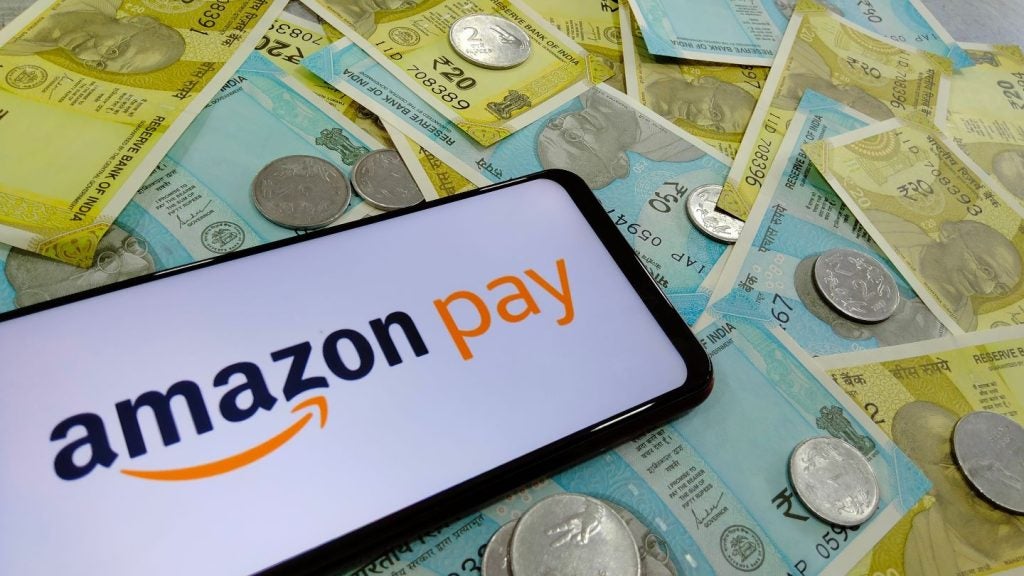While prepaid open-loop and closed-loop transactions are the fastest-growing POS transaction types in Canada, they still only account for small proportions of POS volume and value. Despite this, the prepaid growth opportunities are significant, especially in the open-loop segment, reports Robin Arnfield
A 2016 report from Mercator based on a survey of issuers and programme managers conducted with the Canadian Prepaid Providers Organisation (CPPO) estimates that C$3.1bn ($2.37bn) was loaded onto Canadian Amex-, MasterCard- or Visa-branded prepaid cards in 2015.
“The Canadian open-loop prepaid market has eight active segments, compared to 17 in the US, showing significant growth opportunity for Canadian prepaid programmes,” the report says. The Canadian market is expected to follow US trends, where open-loop prepaid cards are the fastest-growing form of electronic payment.”
The Mercator study revealed that:
- General-purpose reloadable (GPR) card loads totalled C$1.84bn in 2015, with the average load per card being C$2,016;
- Total loads onto open-loop gift and mall cards that use a restricted access network over open-loop rails amounted to C$1.03bn, with the average load per card being C$83;
- The average load onto all categories of consumer-funded prepaid card was C$218;
- The average load onto all categories of corporate-funded prepaid card was C$125, and
- The average load onto corporate-funded cards used for consumer and employee/partner incentives was C$110.
Growth opportunities
“My view is that there’s room for growth in the Canadian prepaid card market,” says Peter Read, president of Vancouver-based prepaid card issuer Peoples Card Services.
“Excluding US government prepaid cards the US open-loop prepaid card market is running at around $200bn a year in loads. Assuming that Canada is about 10% of the US market, we should be seeing around $20bn a year in prepaid loads, but we’re nowhere near there yet.”

US Tariffs are shifting - will you react or anticipate?
Don’t let policy changes catch you off guard. Stay proactive with real-time data and expert analysis.
By GlobalDataAccording to Payments Canada’s 2016 Canadian Payment Methods and Trends Report, prepaid open- and closed-loop transactions are the fastest-growing POS transaction type, but still only account for small proportions of POS volume and value.
In 2015, prepaid cards represented 1.1% of total Canadian payments by volume, accounting for 236 million transactions worth C$18bn says Payments Canada.
Formerly known as the Canadian Payments Association, Payments Canada is responsible for running the country’s core payments infrastructure.
Corporate prepaid and GPR
Peoples is seeing the most growth in corporate prepaid issuance, says Read.
“This can be corporations giving prepaid cards to consumers as rewards for buying one of their products, incentives, or corporate prepaid cards that are used for B2B [business-to-business] activities such as receivables payments, purchasing/procurement, payroll or controlling employee expenses,” he says.
“There’s a lot of room for corporate B2B prepaid cards to grow. There has always been a lot of business for corporate B2C [business-to-consumer] prepaid incentive cards, and this particular segment will continue to grow. Another important segment in Canada is GPR prepaid cards.”
“We’re seeing more consumer GPR prepaid cards being launched in Canada as an alternative to bank accounts or for discretionary spending,” says Jennifer Tramontana, the CPPO’s executive director.
“Both prepaid travel and prepaid commercial cards are areas we believe are poised for growth in Canada,” says a Visa Canada spokesperson.
Cheque replacement
A major area of growth for prepaid cards in Canada will be to replace cheques. “A large number of cheques could be replaced by open-loop prepaid cards,” Read says.
According to a Peoples Card Services white paper, Canadian consumers and businesses wrote nearly one billion cheques, worth C$3.9trn, in 2014. Most of these were written to and from businesses and government.
According to Payments Canada, use of cheques has declined by 25% since 2011. However, the total value of cheques has been buoyed by their continuing use by Canadian businesses, growing by over 2% on average each year, the industry body says.
Fintech
“Anything tied in with fintech will be a growth area for prepaid cards in Canada,” Read says.
“One example is linking GPR prepaid cards to a card provider’s mobile app that lets cardholders manage their budgeting from their phone. I also think there will be growth under the umbrella of fintech in payroll, business expenses and business disbursement cards.”
Examples of GPR prepaid cards linked to mobile personal financial management apps include Koho’s prepaid Visa card, which is issued by Peoples, and Mogo Finance Technology’s Platinum Prepaid Visa card, which is issued by Toronto-based Home Trust and linked to the digital Mogo Spending Account.
Vancouver-based Mogo says cardholders can link existing bank accounts to the Mogo Spending Account and transfer funds instantly. “The Mogo account is designed to help consumers monitor and control spending in a convenient, engaging way, through features such as instant transaction alerts with each purchase along with updated real-time balances and no monthly account fees,” it says.
“Mogo cardholders have access to Mogo’s other products, including free monthly credit score monitoring, mortgages and personal loans.”
The November 2016 How Canadians Pay Today survey of 1,006 Canadian consumers found that while 99% have bank accounts, there is a growing interest, especially among younger people, in alternative payment tools.
The survey, commissioned by the CPPO, found that 8% more Canadian consumers are seeking out Amex, MasterCard and Visa prepaid cards compared to 2015.
“Nearly half of these consumers make under C$40,000 a year, and 57% are under the age of 45, with a third being under 35,” the CPPO says.
“Overall, an Amex, MasterCard and Visa prepaid card user is more likely to be male, between the ages of 18 and 44, and a user of an alternative payment method.”
Insurtech
“One area of fintech that could well be applied to prepaid cards is insurtech, as insurance payouts remain a market to be cracked for prepaid cards,” says Read.
Insurtech can be defined as the use of technology to modernise and make more user-friendly insurance processes such as customer service, pricing strategy, claims processing and payouts.
Insurance payouts for car repairs, for example, can be distributed via prepaid cards that can only be used on a restricted authorization network to insurance claimants for use solely at approved garages.
Technology Strategies International
According to Canadian consultancy Technology Strategies International’s (TSI) 2016 Canadian Consumer Payments Survey conducted in March 2016, 17.3% of Canadian adults had bought a prepaid card branded with one of the major card schemes in the previous year, up from 14.95% in the 2015 survey.
The average value of prepaid cards purchased in the year prior to March 2016 was C$114.93, compared to C$120.32 in the previous survey.
TSI’s Canadian Payments Forecast 2016 says the value of open-loop prepaid cards purchased by Canadians in 2015 was C$1.79bn and represented 14.9 million cards. The report anticipates that the market will grow to C$2.1bn in terms of the value of cards purchased, with a total of 18.8 million cards and an average value per card of C$113 in 2020.
MarketSense
Canadian financial market research firm MarketSense’s survey of 5,257 adult Canadian credit cardholders found that purchases of open-loop prepaid cards were slightly higher in 2015 than in 2016.
“The five-year trend shows significant growth in the purchase of prepaid cards from 19% of credit cardholders in 2012 to 36% in 2015,” MarketSense’s Lynda Lovett and Mary-Anne Huestis tell CI. “In 2016, 32% of credit cardholders purchased at least one prepaid card.”
The majority of prepaid cards purchased are Visa-branded, bought by 19% of credit cardholders in 2016, MarketSense found.
Prepaid Visa gift cards outnumbered reloadable prepaid cards in 2016, with 16% buying gift cards while 3% bought reloadable cards. Prepaid MasterCards were purchased by 8% of credit cardholders, with gift cards a more popular choice than reloadable cards (6% compared to 2%).
Only 2% of credit cardholders purchased a prepaid Amex card in 2016.
“It appears that prepaid cards are attracting business travellers (41%) and those who revolve their credit card loans (37%) at higher numbers,” say Lovett and Huestis. “Members of the leading travel rewards programmes also register higher incidences of purchasing prepaid cards – for example WestJet Rewards members (48%), Aeroplan Distinction members (54%), Air Miles Gold members (37%) and Onyx members (47%). It’s also worth noting a much higher incidence of prepaid card purchases among those who have transferred a credit card balance at least once in the past two years (49%).”
One in four gift cards were purchased for personal use in 2016 (39% of the 32% of credit cardholders who bought prepaid cards in 2016), with a slightly smaller proportion (36% of those who had bought prepaid cards) purchased for family or friends, MarketSense found. Cards purchased for children were less common, with 9% purchased for those living at home and 8% for children living away.
“Eight in 10 respondents agreed that it is important to be able to easily determine the balances remaining on prepaid cards,” Lovett and Huestis say. “Six in 10 agreed that prepaid cards are a useful way to educate people about the appropriate use of credit cards. An equal proportion said they are likely to purchase prepaid cards for children under the age of 18 or to use prepaid cards as an alternative to travellers’ cheques or foreign currency when travelling.”
Prepaid card regulations
In Canada, private-label or closed-loop retailer-branded gift cards are regulated at provincial level. In British Columbia, gift cards cannot have expiry dates unless they are issued or sold for charitable or promotional purposes for a specific good or service.
In May 2014, the Canadian Federal Government introduced regulations for open-loop prepaid cards. The Prepaid Payment Product Regulations include a ban on card maintenance fees for at least a year after the card is activated, a ban on expiry dates for non-promotional open-loop prepaid cards, a requirement that issuers disclose all fees associated with the card in an information box printed on the card’s packaging, and a requirement for terms and conditions to be disclosed, including how to get balance information.
The Financial Consumer Agency of Canada (FCAC), a federal body, is responsible for enforcing compliance with Canada’s open-loop prepaid card rules, which apply to all federally regulated financial institutions such as banks and trust companies.
Issuers
Peoples Card Services, the card-issuing arm of Peoples Trust, is the largest Canadian open-loop prepaid card issuer in terms of market share, says Jennifer Tramontana, the CPPO’s executive director. “Home Trust also has a sizeable piece of the Canadian open-loop prepaid card market,” she says.
“The big six Canadian banks, in general, tend to issue prepaid cards to their own customer base as an added benefit,” says Read. However, Royal Bank of Canada recently withdrew from the open-loop prepaid card market.
In September 2016, CIBC launched two prepaid travel cards: the CIBC Air Canada Conversion Visa Prepaid Card, a reloadable prepaid card available only through Air Canada that allows clients to store up to 10 currencies in a single location, managed by a dedicated mobile app, and the Smart Prepaid Travel Visa card, available through CIBC which stores US dollars, euros, pounds and Mexican pesos.
Peoples Card Services
Peoples Card Services acts as a sponsor for multiple prepaid card programme managers, offering a range of card programmes they can sell to customers.
“We provide a one-stop shop for program managers,” explains Read. “Peoples Card Services acts as the issuer for its programme manager clients, managing the relationships with Visa, MasterCard, and the processors, acting as BIN sponsor, managing the cardholder funds, and ensuring that all the parties – prepaid program managers, processors, distributors – are compliant with federal regulations.”
Peoples Card Services also offers secured credit cards that users have to prepay in advance. “These credit cards are designed to establish or rebuild a cardholder’s credit rating, as the cardholder’s usage is reported to the credit bureaux,” says Read.
Currently, open-loop prepaid cards sold by retailers are the largest segment for Peoples. “This comprises both GPR cards that customers can deposit the cash from their pay-cheque onto, and retailer-branded anonymous prepaid shopping cards,” Read adds.
“The vast majority of the prepaid funds we see being loaded onto our cards are onto shopping cards and GPR cards sold in supermarkets. The biggest GPR card that we offer is the Titanium MasterCard.”
Read says that while Peoples’ retailer-branded open-loop prepaid cards are sold in supermarkets as gift cards, 75% of these are actually used by the person who buys them. “They buy prepaid cards so they can shop anonymously online, not for gifting,” he says.
Peoples is also active in the travel prepaid segment. In February 2017, it launched the Cash Passport prepaid MasterCard-branded multi-currency travel card with Canada Post and prepaid card distributor Payment Source.
Koho
Canadian fintech startup Koho will launch a GPR prepaid Visa card issued by Peoples at the end of the first quarter of 2017. Users will be able to have their salary deposited to their Koho card, withdraw cash from ATMs, transfer money and pay bills.
“The Koho card will be focused at millennials,” says Read. “It will be accompanied by a mobile financial management app that lets cardholders manage their Koho card and their finances on their phone.
“You’ll be able to enter your expenses and income into the Smart Spending Account app and it will tell you how much discretionary money you have left to spend, which will help you become more financially responsible,” Read continues.
“This is disruptive to standard bricks-and-mortar banking, as Koho lets you manage your finances via your phone.”
Initially, Koho cardholders will not be able to use a mobile app for mobile shopping at the point of sale.
“As the Koho card is registered in the cardholder’s app, it can be used for online shopping,” says Read. “We’re working on adding the ability to do NFC payments from the cardholder’s phone in stores.”







